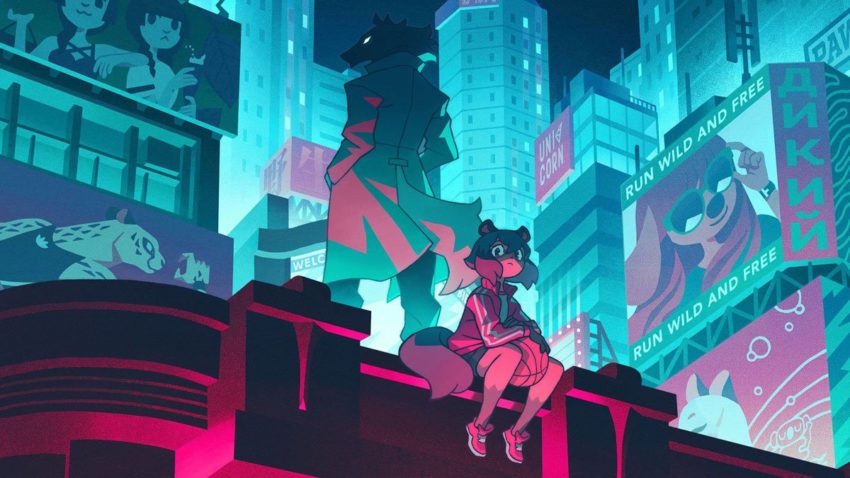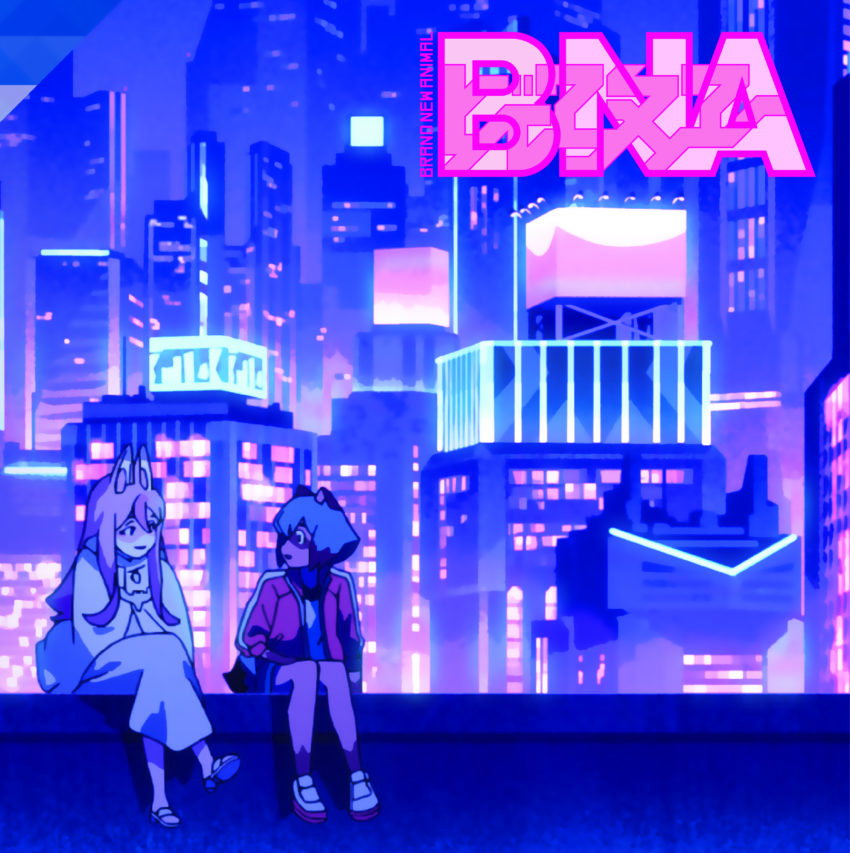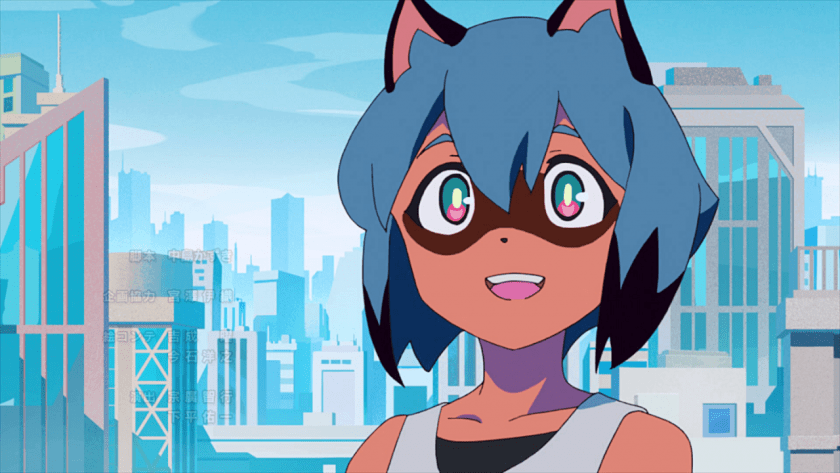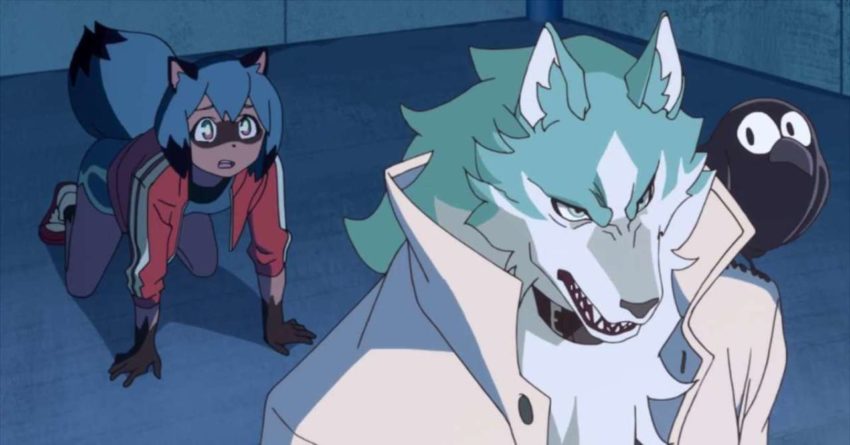Brand New Animal OST
September 24, 2021 · 0 comments
By Kambole Campbell.

A sci-fi/fantasy produced by Studio Trigger, BNA: Brand New Animal has made a striking impression with vivid and flashy visuals typical of the work of You Yoshinari (director and character designer on Little Witch Academia). Known for his detailed yet explosive free-form animation style, the unlimited expression of Yoshinari’s artwork is perfectly embodied in BNA, a show about a branch of humanity called Beastmen, who exist in an untold variety of forms. Such diversity and freedom is also embodied in the show’s original soundtrack, with music composition from the artist mabanua. As the show follows Michiru, a human recently turned into a Beastman, to the safe haven Anima City, the score evolves along with her as her perspective continually changes and she discovers new abilities.

Mabanua has worked on other anime shows – such as Megalobox and its recent follow-up Nomad: Megalobox 2, and Shinichiro Watanabe’s Kids on the Slope – but his work on BNA is different, partially because it’s untethered from any one location or culture. Not that these are drawbacks, his interpretation of contemporary hip-hop and other musical styles associated with African-American culture is an essential piece of the atmosphere of Megalobox and a real driving force behind its working-class underdog narrative. Megalobox 2 quite literally expands this to an international perspective, evoking contemporary and traditional Latin American music.
BNA instead builds off a sound based in a relatively young and nebulous culture, and veers towards modern instrumentation rather than orchestra or big band. Mabanua has shown a keen perspective on how the genres he incorporates into his scores reflect onto the story they accompany; when speaking to Anime News Network Megalobox director Yo Moriyama and mabanua talked about how Megalobox’s musical story wanted to “represent Black music, starting with hip hop”, continuing “as a musical genre, Blues originated from work songs … it lent weight to a story that is about “rising from the very bottom all the way to the top.”. At the same time, Nomad: Megalobox 2 is representative of mabanua’s meticulousness in taking on music from different cultures, this time drawing on popular and traditional Latin American music, a sound a bit more low-key than his last two compositional works for television.
Where that drew on Latin music and the first season of Megalobox drew heavy inspiration from Black music, the specific roots of BNA are less placeable – playing with a more general pop music sound. But its sonic diversity embodies the variety of peoples in the city, and also perhaps embodies the blurred line between Michiru’s dual identities.

As such, a colourful range of live instruments remain in play alongside the synths: samples of horns (“We Are Bears”, perhaps the show’s goofiest cue) are scattered throughout; tracks like “The Founder” even have what sounds like a distorted organ. Action is often characterised by a switch to live and more jagged instrumentation; “Fight for Pride” is full of face-melting electric guitar solos. It’s eclectic and unpredictable. There’s electronic notes to match the neon and pastel purple tones of the show, which effortlessly shifts from a friendly appearance to that of the crime-soaked megalopolis where much of the story takes place. It shifts genre as easily as the “beast men” shift their appearances, moving from the dance music of the opening to punk rock that scores a quick fight scene, to the hip-hop beats that fans of Megalobox will be familiar with, before “Reunion”, “Hope” and “Anima-City” ease back into the light fluttery synths of electro-pop that characterise the show’s more optimistic moments.
Appropriately, it’s not just mabanua dictating the musical stylings of BNA’s soundtrack, the opening ‘Ready To’ is composed by Jin Tanaka and arrange by R.O.N. (who also performs as STEREO DIVE FOUNDATION) with lyrics produced by Rihoco, and sung by Sumire Morohosi who voices Michiru herself. There’s a strong connection between music and character, that connection remaining at the forefront of the series from beginning to end. At the same time, “Ready to Go” starts the show off with high energy, almost disguising the murkiness lying close to the surface – its premise, after all, being that of a persecuted underclass forced to isolate itself on an island nation away from humans.
In a sense, BNA shows pop music as a connective thread between cultures, its power over people’s emotion is so strong that at one point in the show it even becomes hypnotic and dangerous as ‘Déesse louve’ (Nazuna’s persona as an idol) uses her magnetism and in the service of a cult. But the show isn’t so cynical as to resign pop music as something simply manipulative.

The track “Night Running”, sung by Japanese electronic musician Aaamyyy (aka Honami Furuhara), is important in this regard, not just the exact kind of pop earworm that the show frequently emulates but an important piece of diegetic music, a favourite song of Michiru and her old friend Nazuna. Through these interactions, music and the experience of it serve as a connective bridge, the joy of listening to it together a key memory for both Nazuna and Michiru. Where the opening song has an emotional connection to Michiru, the ending song has a direct impact on the world of the show.
BNA stands apart as something leaning into mabanua’s multi-instrumentalist background and penchant for experimentation, playing around with electronic sampling and synths as often as it does live instrumentation. The genre roots of mabanua’s earlier scores are more consistent and worn on their sleeves, BNA is a little bit more slippery as it weaves together disparate instruments and sounds. It fits the nature of the show – as the image of Anima City is constantly shifting in Michiru’s eyes as she discovers more of the truth. In the first episode, the city seems like fantasy, and then a paradise, which again turns as it proves to have its own exploitative hierarchy. Even just that introduction has a musical journey across all of what Anima City contains, and in portraying this mabanua doesn’t just manage the tone of the show but shifts genres to accommodate it – even evoking horror in the Wolf’s first (brutally violent) action scene through looped choruses, discordant tones and isolated drums.
There are surprisingly close ties to Megalobox’s tale of people living on the fringes of society, and the cultural melting pot that exists outside of the hegemony of the ruling classes – corporations in both instances. In each show, mabanua’s music is a manifestation of the diverse sounds and cultures that spring from such communities. In short, as well as being imminently re-listenable, his score work is perfect for the show because of his flexible, futuristic sound – having adapted hip-hop and Latin music into his work for that show. As such his style feels like a reflection of the show’s melting pot city setting and, through its electronic tones, an extension of its cyberpunk aesthetics.
The BNA soundtrack is released in the UK by Anime Limited.
Leave a Reply